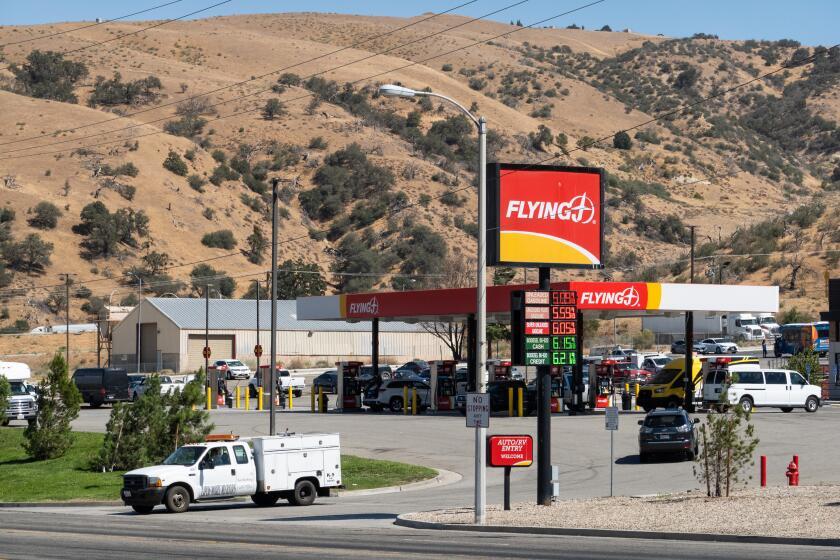Going for the Records : Clerks Sift Through 85 Years’ Worth of Documents in City Hall Vault and Transfer Them to Computer Files
- Share via
GLENDALE — Deep in the basement of City Hall is a musty, fireproof concrete cell called The Vault.
Locked behind a steel door are 85 years worth of the city’s records: 22,000 resolutions, 5,000 ordinances and 710 linear feet of contracts, variances, easements and permits.
Boxes and file cabinets, stacked one atop another, are crammed into the 15-by-36-foot chamber.
But for the past several months, following installation of a computer program known as an Optical Disk Storage and Retrieval System, clerks have been sifting through The Vault.
The task of entering all city records into the computer began two years ago and is expected to take at least another two years, said City Clerk Aileen B. Boyle. Once completed, the system will save thousands of dollars a year in reduced manpower and ease of operation, officials said.
Two city workers--Deputy Clerk Diane Gladwell and Muriel Blauvelt, a 42-year clerk assistant--are in charge of mining The Vault. Important documents, such as original handwritten ledgers of council minutes and records with historic, legal or administrative value, are being dusted off, copied into the computer system, then returned to shelves within the chamber.
But not all of the yellowed papers are destined for perpetuity. Aged applications for special permits, for instance, are being weeded out and discarded.
The forgotten permits have no real significance in the city’s historic dealings, except, perhaps, as souvenirs of eras: stickers depicting a pair of red-stocking legs marking the opening of a Nehi Bottling Co. plant in 1930; a “ballyhoo car” with banners and speakers to advertise Clara Bow’s “Call Her Savage” at the Fox-Alexander Theatre in 1932; a display of an embalmed whale on Brand Boulevard in 1936; a tent erected in 1944 to house a “Jap Zero plane.”
Permits issued during the Great Depression tell their own story: residents selling apples on street corners, and selling home-baked goods, preserves and mothballs door-to-door.
Glendale’s involvement in World War II is evident in records from the early 1940s: a cosmetic manufacturing company that turned to making airplane parts; a booth erected on Brand to sell war bonds.
“I thought being a city clerk was pretty boring stuff, but not always,” Gladwell said. “All of this really gives a good feel for the culture of Glendale and the things that went on in different eras,” she said, waving at rows of cardboard boxes filled with permits soon to be discarded.
Documents considered to have historic value are sent to the Special Collections section of the Glendale Library. The more mundane await destruction, following review by the city attorney and a resolution of the City Council.
Boyle said her main goal when she was elected in 1989 was to clean out The Vault and bring the city’s record-keeping system into the computer age. As the deputy city clerk since 1979, it had often been Boyle’s task to search through the dusty vault for needed records--a painstaking duty.
She and other city officials envision that all city departments and the public will soon have access to a minutiae of detail--such as the answer to a recent query from a property owner wanting to know when her house was built in the former city of Tropico, now a part of south Glendale.
The system “is able to file things and to retrieve things as only a computer can do,” said City Manager David Ramsay. “You simply mention a word or phrase, and the system is able to sort through entire files. It greatly expands our ability to do research.”
The system’s equipment is set off in a tiny area of the city clerk’s basement lunch room. There, up to 50 disks, each with a capacity for 13,000 pages of documents, are stored in a sort-of “disk jockey,” as the clerks call it, ready to instantly retrieve information at the push of a button.
It takes workers about two months to fill a disk with records from the archives. A copy of each disk is then sent to Utah for storage in a security vault blasted out of a granite mountain. “When California falls off the world, Glendale will still have its records,” Gladwell said.
Ramsay called the city clerk system “only the tip of the iceberg.” All of the city’s records, including engineering maps and building permits, will be added, he said. The library in September will make its own computer system available to the public, with access terminals in the new Perkins public service building and, eventually, at kiosks along Brand Boulevard.
Ultimately, millions of city documents and library information will be available to anyone with a home computer.
Phoenix City Clerk Vicky Miel, considered an expert in records management, said that Glendale’s system, like one installed in the Arizona city in 1988, is capable of faxing documents to businesses or individuals, a widely used feature that saves trips to City Hall. “It’s very efficient,” Miel said. It’s also neat, clean, quick and precise.
Quite different from the musty odor and shaky penmanship of the 1935 handwritten request from Nellie Kester of East Lomita Avenue to sell “moth preservatives from house to house.”
More to Read
Sign up for Essential California
The most important California stories and recommendations in your inbox every morning.
You may occasionally receive promotional content from the Los Angeles Times.













